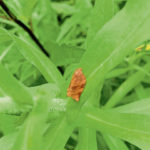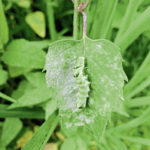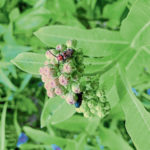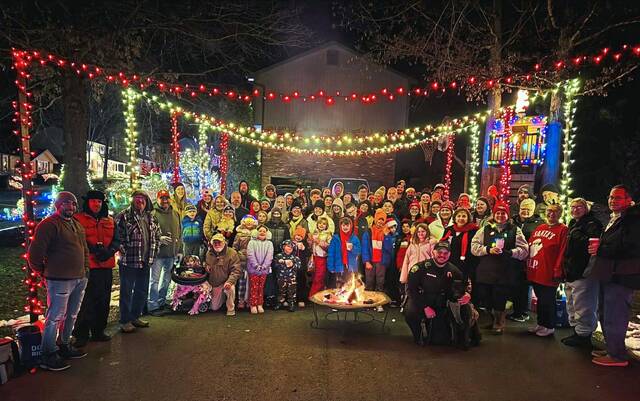Bees aren’t the only ones who play a role in making sure we have foods like blueberries and pumpkins.
Birds, butterflies, bats and other bugs are just as important in moving pollen among flowers, but many are facing a decline in habitat, said Pam Curtin, education coordinator at Historic Hanna’s Town and the Westmoreland Historical Society.
“Pollinators support a lot of our food source,” she said, adding the loss of such species could have an impact on food for humans as well as animals.
That’s where the Westmoreland Pollinator Partners steps in.
Officials with the new group held kickoff events Saturday around the county as a way to introduce residents to the possibilities of growing a pollinator garden and preserving native habitats that already exist. Nonprofits, schools and community gardens have joined together after members of the Loyalhanna Watershed Association discussed new educational outreach opportunities last year.
At Historic Hanna’s Town in Hempfield, a native bee crawled around on butterfly weed Saturday in a pollinator garden. Two beetles sat on milkweed, which is a food source and home base for monarch butterflies to lay eggs.
“Milkweed is often destroyed,” Curtin said.
Historic Hanna’s Town is going to be a safe haven for those insects and winged creatures — Curtin said plans are in the works to add more native plants to replace habitats that are often destroyed by residential and commercial development.
Birds need native plants, such as sunflowers, coneflowers and blueberry bushes, for their own food source.
“It’s not just the bees,” said Karen Banks, a Penn State master gardener.
There are several options for residents who want to help pollinators.
“They can learn about different types of native plants and replace ornamental plants with native plants,” Curtin said.
In addition, stop using pesticides, support local beekeepers, turn a grassy area into a meadow and seek out help from members of Westmoreland Pollinator Partners for suggestions on what to plant or where to get those items.
“This is something that a homeowner could do: they take a hillside and plant” a garden that attracts pollinators like the one at Historic Hanna’s Town, Banks said.
In addition to the watershed association and Historic Hanna’s Town, other groups involved with the Westmoreland Pollinator Partners are: the Ligonier Country Market and the Ligonier Community Garden, Powdermill Nature Reserve, Penguin Court/Brandywine Conservancy, Forbes State Forest, Southern Alleghenies Museum of Art, Ligonier Valley YMCA, Amos K. Hutchinson Elementary School, Winnie Palmer Nature Reserve, Penn State Extension at Donohoe Center, West Overton Museums, Mt. Pleasant Library, the Fred Rogers Center at Saint Vincent College (Foster and Muriel McCarl Coverlet Gallery) and the Westmoreland Museum of American Art.













